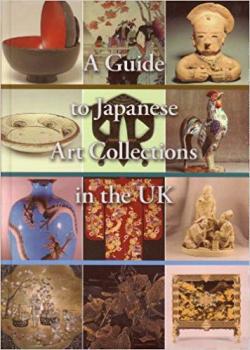A Guide to Japanese Art Collections in the UK

Edited by Greg Irvine
Hotei Publishing, The Netherlands; 01 edition (1 Jan. 2004)
ISBN-13: 978-9074822749
Review by Marie Therese Barrett
To quote Ambassador Masaki Orita's foreword, "I believe that this guide will greatly benefit all those with an interest in Japan's unique art and culture by identifying the wide range of Japanese art collections to be found throughout the UK - although there are undoubtedly more treasures still to be discovered."
Edited with great dedication and insight by Gregory Irvine, curator in the Asian Department of the Victoria & Albert Museum, and member of the Japan Society's Publications Committee, the handy-sized book covers over 160 museums, country houses and other sites in the UK and Ireland with significant items of Japanese arts and crafts. The objects include everything from netsuke to armour, lacquer ware, prints, ceramics and textiles. The sources range from the major national and civic institutions to important former private collections such as Charles Paget Wade's at Snowshill Manor in Gloucestershire, and small groups of items in unexpected places such as Bamburgh Castle, visited by the present Emperor in 1953.
The book is generously illustrated with selected gems from the collections and is full of delightful details which reveal the fascination which these finely wrought items have had for the British ever since their first encounters with Japan four hundred years ago. Gregory Irvine traces the history of taste for Japanese art and the acquisition of Japanese objects in a concise and absorbing scholarly introduction.
Given the difficulties encountered in extracting information for this guide, it is a triumph of research and clarity. Organised regionally, it is a perfect companion for exploratory trips, while the excellent index gives references both to places and key objects and personalities. But perhaps the most important outcome of Gregory Irvine's work on this publication is the realisation that there is much more to be revealed and researched.

